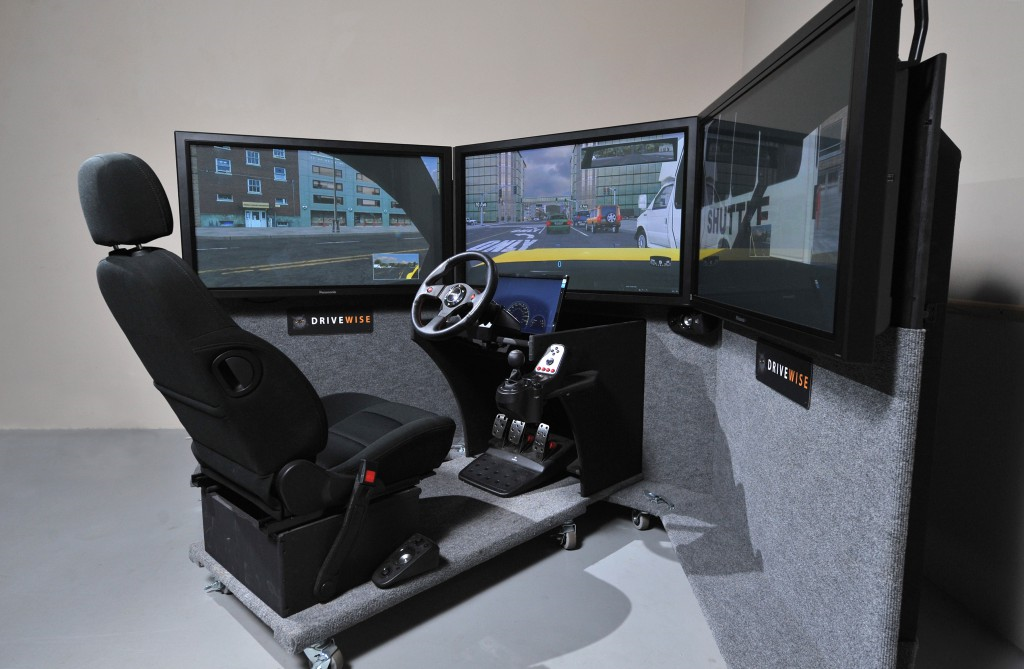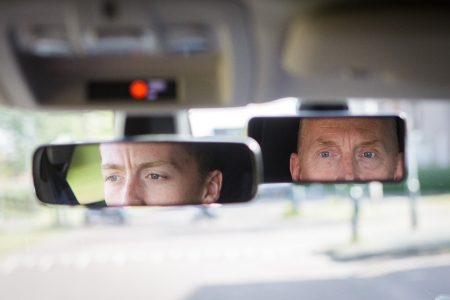Below, you will find a list of references used in this fact sheet. All sources used may be accessed via our library portal where more literature on this subject may also be found.
[1]. Vlakveld, W.P. (2006). Veiligheidswaarde van de ANWB-rijopleiding. D-2006-5. SWOV Leidschendam.
[2]. Clarke, D.D., Ward, P. & Truman, W. (2005). Voluntary risk taking and skill deficits in young driver accidents in the UK. In: Accident Analysis & Prevention, vol. 37, nr. 3, p. 523-529.
[3]. Curry, A.E., Hafetz, J., Kallan, M.J., Winston, F.K., et al. (2011). Prevalence of teen driver errors leading to serious motor vehicle crashes. In: Accident Analysis & Prevention, vol. 43, nr. 4, p. 1285-1290.
[4]. McKnight, A.J. & McKnight, A.S. (2003). Young novice drivers: careless or clueless? In: Accident Analysis & Prevention, vol. 35, p. 921-925.
[5]. Møller, M. & Haustein, S. (2014). Peer influence on speeding behaviour among male drivers aged 18 and 28. In: Accident Analysis & Prevention, vol. 64, p. 92-99.
[6]. Vlakveld, W.P. (2013). Benchmarking rijschoolsystemen in Nederland en omringende landen. Vergelijking van rijschoolsystemen en hun veiligheidswaarde in Nederland, Duitsland, België en het Verenigd Koninkrijk. R-2013-17. SWOV, Den Haag.
[7]. Beanland, V., Goode, N., Salmon, P.M. & Lenné, M.G. (2013). Is there a case for driver training? A review of the efficacy of pre- and post-licence driver training. In: Safety Science, vol. 51, nr. 1, p. 127-137.
[8]. Elvik, R., Høye, A., Vaa, T. & Sørensen, M. (2009). The handbook of road safety measures. Second edition. Emerald, UK.
[9]. Kinnear, N., Lloyd, L., Helman, S., Husband, P., et al. (2013). Novice drivers: evidence review and evaluation–pre-driver education and training, graduated driver licensing, and the New Drivers Act. Published Project Report; PPR673. Transport Research Laboratory, TRL, Crowthorne.
[10]. Peck, R.C. (2011). Do driver training programs reduce crashes and traffic violations? — A critical examination of the literature. In: IATSS Research, vol. 34, nr. 2, p. 63-71.
[11]. Hatakka, M., Keskinen, E., Baughan, C., Goldenbeld, C., et al. (2003). Basic driver training: New Models. Final report of the EU-project on driver training 'BASIC'. University of Turku, Finland.
[12]. Lund, A.K., Williams, A.F. & Zador, P. (1986). High school driver education: Further evaluation of the Dekalb County study. In: Accident Analysis & Prevention, vol. 18, nr. 4, p. 349-357.
[13]. Carstensen, G. (2002). The effect on accident risk of a change in driver education in Denmark. In: Accident Analysis & Prevention, vol. 34, nr. 1, p. 111-121.
[14]. Shell, D.F., Newman, I.M., Córdova-Cazar, A.L. & Heese, J.M. (2015). Driver education and teen crashes and traffic violations in the first two years of driving in a graduated licensing system. In: Accident Analysis & Prevention, vol. 82, p. 45-52.
[15]. Simpson, H., Chinn, L., Stone, J., Elliott, M., et al. (2002). Monitoring and evaluation of safety measures for new drivers. Prepared for Road Safety Division, Department for Transport, Local Government and the Regions. TRL Report; No. 525. Transport Research Laboratory TRL, Crowthorne, Berkshire.
[16]. Wells, P., Tong, S., Sexton, B., Grayson, G., et al. (2008). Cohort II - A study of learner and new drivers. Volume 2: questionnaires and data tables. Department for Transport (DfT), London.
[17]. Horswill, M.S., Hill, A. & Wetton, M. (2015). Can a video-based hazard perception test used for driver licensing predict crash involvement? In: Accident Analysis & Prevention, vol. 82, p. 213-219.
[18]. Baughan, C.J. & Sexton, B. (2002). Do driving test errors predict accidents? Yes and no. In: Behavioural research in road safety XI : proceedings of the 11th seminar on behavioural research in road safety. p. 197-209.
[19]. Baughan, C.J., Sexton, B., Maycock, G., Simpson, H.M., et al. (2005). Novice driver safety and the British practical driving test. Prepared for the Department for Transport, Road Safety Strategy Division. TRL Report No. 652 Transport Research Laboratory TRL, Crowthorne, Berkshire.
[20]. Vlakveld, W.P. (2011). Hazard anticipation of young novice drivers: assessing and enhancing the capabilities of young novice drivers to anticipate latent hazards in road and traffic situations. Proefschrift Rijksuniversiteit Groningen. SWOV-dissertatiereeks. SWOV, Leidschendam.
[21]. McDonald, C.C., Goodwin, A.H., Pradhan, A.K., Romoser, M.R.E., et al. (2015). A Review of Hazard Anticipation Training Programs for Young Drivers. In: Journal of Adolescent Health, vol. 57, nr. 1, p. S15-S23.
[22]. Agrawal, R., Knodler, M., Fisher, D.L. & Samuel, S. (2017). Advanced Virtual Reality Based Training to Improve Young Drivers’ Latent Hazard Anticipation Ability. In: Proceedings of the Human Factors and Ergonomics Society Annual Meeting, vol. 61, nr. 1, p. 1995-1999.
[23]. Vlakveld, W., Romoser, M.R.E., Mehranian, H., Diete, F., et al. (2011). Do crashes and near crashes in simulator-based training enhance novice drivers' visual search for latent hazards? In: Transportation Research Record, vol. 2265, p. 154-160.
[24]. Thomas, F.D., Rilea, S., Blomberg, R.D., Peck, R.C., et al. (2016). Evaluation of the safety benefits of the risk awarenesws and perception training program for novice teen drivers. DOT HS 812 235. National Highway Traffic Safety Administration NHTSA, Washington, D.C.
[25]. Winter, J.C. de, Groot, S. de, Mulder, M., Wieringa, P.A., et al. (2009). Relationships between driving simulator performance and driving test results. In: Ergonomics, vol. 52, nr. 2, p. 137-153.
[26]. Washington, S., Cole, R.J. & Herbel, S.B. (2011). European advanced driver training programs: Reasons for optimism. In: IATSS Research, vol. 34, nr. 2, p. 72-79.
[27]. Katila, A., Keskinen, E., Hatakka, M. & Laapotti, S. (2004). Does increased confidence among novice drivers imply a decrease in safety?: The effects of skid training on slippery road accident. In: Accident Analysis & Prevention, vol. 36, nr. 4, p. 543-550.
[28]. Bartl, G., Baughan, C., Fougere, J.-P., Gregersen, N.-P., et al. (2002). The EU ADVANCED Project: Description and analysis of post-licence driver and rider training. Final report. Commission Internationale des Examens de Conduite Automobile CIECA, Rijswijk.
[29]. Craen, S. de, Vissers, J., A.M.M., Houtenbos, M. & Twisk, D.A.M. (2005). Young Drivers Experience: The Results of a Second Phase Training on Higher Order Skills. R-2005-8. SWOV, Leidschendam.
[30]. Keskinen, E., Hatakka, M., Katila, A., Laapotti, S., et al. (1999). Driver training in Finland. In: IATSS Research, vol. 23, nr. 1, p. 78-84.
[31]. Gatscha, M. & Smuc, M. (2004). Evaluation of the 2nd phase system in Austria. In: Sanders, N. & Keskinen, E. (red.), EU NovEV Project: evaluation of post-licence training schemes for novice drivers: final report. Commission Internationale des Examens de Conduite Automobile, CIECA, Rijswijk.
[32]. Mynttinen, S., Gatscha, M., Koivukoski, M., Hakuli, K., et al. (2010). Two-phase driver education models applied in Finland and in Austria – Do we have evidence to support the two phase models? In: Transportation Research Part F: Traffic Psychology and Behaviour, vol. 13, nr. 1, p. 63-70.
[33]. Senserrick, T., Ivers, R., Boufous, S., Chen, H.-Y., et al. (2009). Young driver education programs that build resilience have potential to reduce road crashes. In: Pediatrics, vol. 124, nr. 5, p. 1287-1292.
[34]. Ker, K., Roberts, I., Collier, T., Beyer, F., et al. (2005). Post-licence driver education for the prevention of road traffic crashes: a systematic review of randomised controlled trials. In: Accident Analysis & Prevention, vol. 37, nr. 2, p. 305-313.
[35]. Darby, P., Murray, W. & Raeside, R. (2009). Applying online fleet driver assessment to help identify, target and reduce occupational road safety risks. In: Safety Science, vol. 47, nr. 3, p. 436-442.
[36]. Gregersen, N.P., Brehmer, B. & Morén, B. (1996). Road safety improvement in large companies. An experimental comparison of different measures. In: Accident Analysis & Prevention, vol. 28, nr. 3, p. 297-306.
[37]. Rijbewijs.nl (2019). Rijopleiding In Stappen (RIS). RDW. Geraadpleegd 26 maart 2019 op https://rijbewijs.nl/rijbewijs-halen/rijopleiding-in-stappen/.
[38]. Craen, S. de & Vlakveld, W.P. (2013). Young drivers who obtained their licence after an intensive driving course report more incidents than drivers with a traditional driver education. In: Accident Analysis & Prevention, vol. 58, nr. 0, p. 64-69.
[39]. Baddeley, A.D. & Longman, D.J.A. (1978). The influence of length and frequency of training session on the rate of learning to type. In: Ergonomics, vol. 21, nr. 8, p. 627-635.
[40]. Walker, M.P. & Stickgold, R. (2005). It's practice, with sleep, that makes perfect: implications of sleep-dependent learning and plasticity for skill performance. In: Clinics in sports medicine, vol. 24, nr. 2, p. 301-317.
[41]. HERMES (2010). Final report. EU Coaching Project High impact approach for Enhancing Road safety through More Effective communication Skills HERMES. European Commission DG TREN, Vienna.
[42]. Williams, A.F. (2017). Graduated driver licensing (GDL) in the United States in 2016: A literature review and commentary. In: Journal of Safety Research, vol. 63, p. 29-41.
[43]. Schagen, I.N.L.G. van & Craen, S. de (2015). Begeleid rijden in Nederland Heeft 2toDrive effect op zelfgerapporteerde ongevallen en overtredingen? R-2015-11. SWOV, Den Haag.
[44]. Schagen, I.N.L.G. van & Craen, S. de (2014). Begeleid rijden in Nederland. Hoe wordt 2toDrive in de praktijk ingevuld? R-2014-15. SWOV, Den Haag.
[45]. Vlakveld, W. & Stipdonk, H.L. (2009). Eerste verkenning naar de effectiviteit van het beginnersrijbewijs in Nederland. D-2009-2. SWOV, Leidschendam.
[46]. Smit, W., Hulst, J. van der & Homburg, G. (2018). Evaluatie van de beginnersregeling. Publicatienr. 17025. Regioplan (in opdracht van WODC), Amsterdam.
[47]. Vlakveld, W.P. (2004). Het effect van puntenstelsels op de verkeersveiligheid: Een literatuurstudie. R-2004-2. SWOV, Leidschendam.
[47]. I&O Research (2016). Rijden onder invloed in Nederland in 2002-2015: ontwikkeling van het alcoholgebruik van automobilisten in weekendnachten. Ministerie van Infrastructuur en Milieu, DG Rijkswaterstaat, Water, Verkeer en Leefomgeving WVL, ‘s-Gravenhage.
[48]. Senserrick, T. & Whelan, M. (2003). Graduated driver licensing: effectiveness of systems and individual components. MUARC Report No. 209. Monash University, Accident Research Centre MUARC, Clayton, Victoria.
[49]. Horswill, M.S., Garth, M., Hill, A. & Watson, M.O. (2017). The effect of performance feedback on drivers’ hazard perception ability and self-ratings. In: Accident Analysis & Prevention, vol. 101, p. 135-142.
[50]. Horswill, M.S., Garth, M., Hill, A. & Watson, M.O. (2017). The effect of performance feedback on drivers’ hazard perception ability and self-ratings. In: Accident Analysis & Prevention, vol. 101, p. 135-142.

 Figure 1 Example of the type of driving simulator often used for training purposes.
Figure 1 Example of the type of driving simulator often used for training purposes.